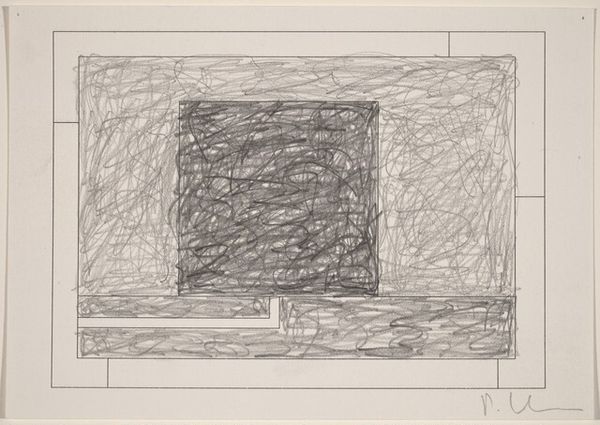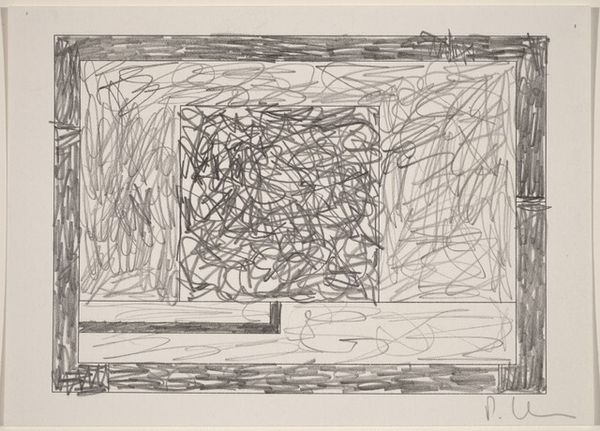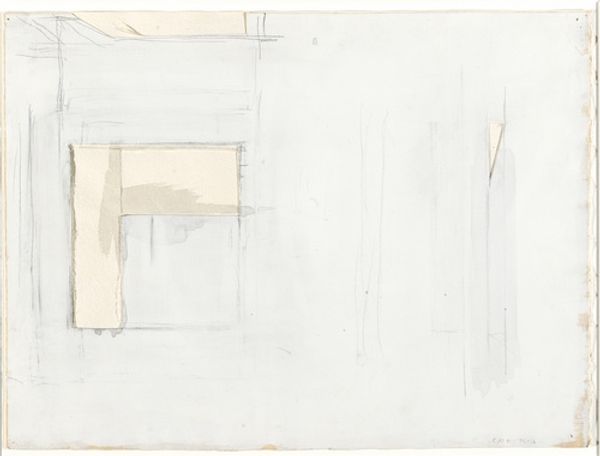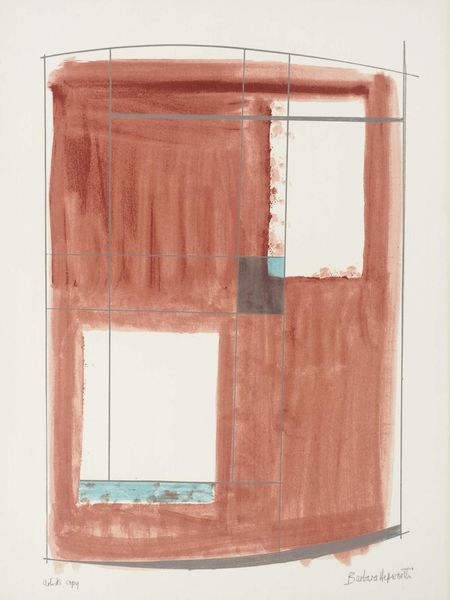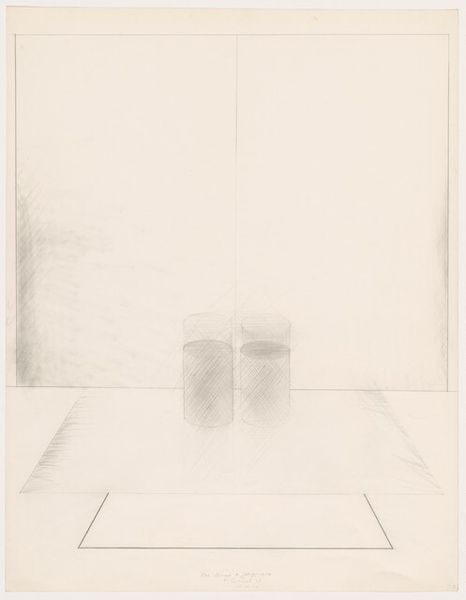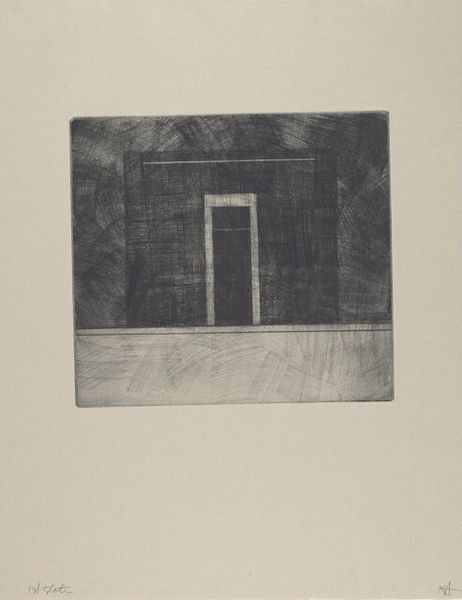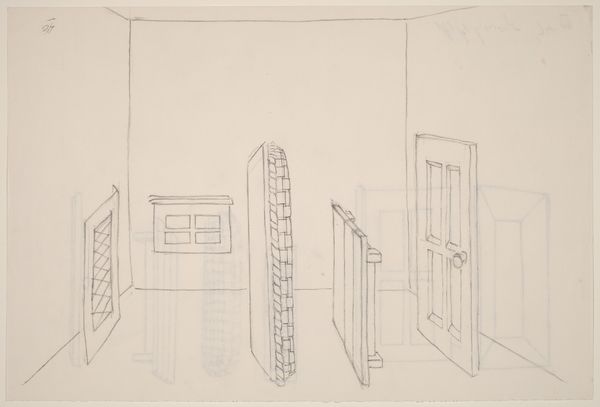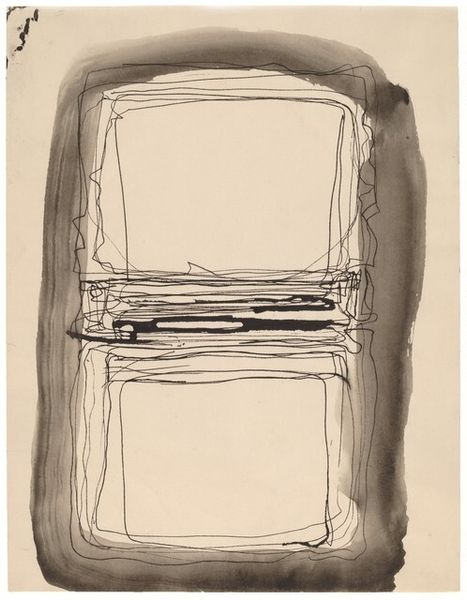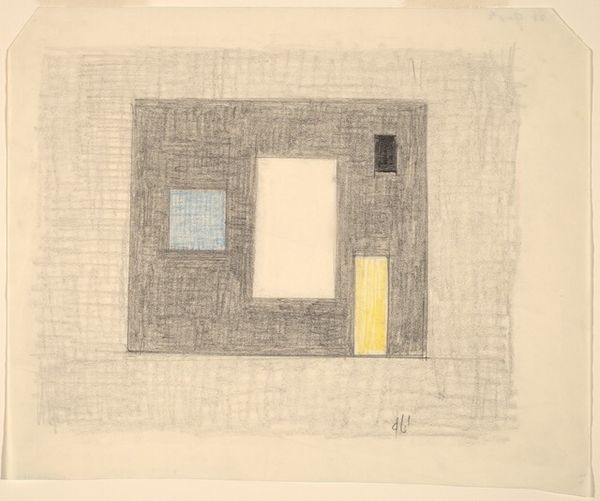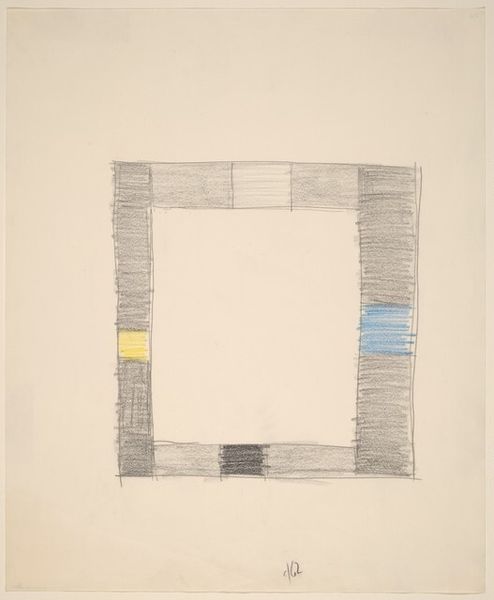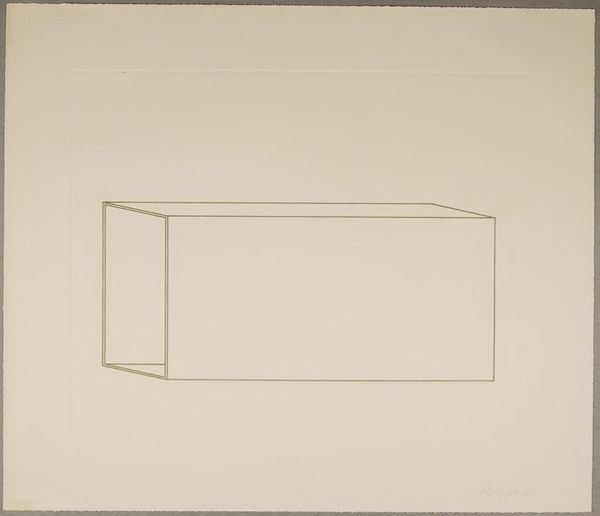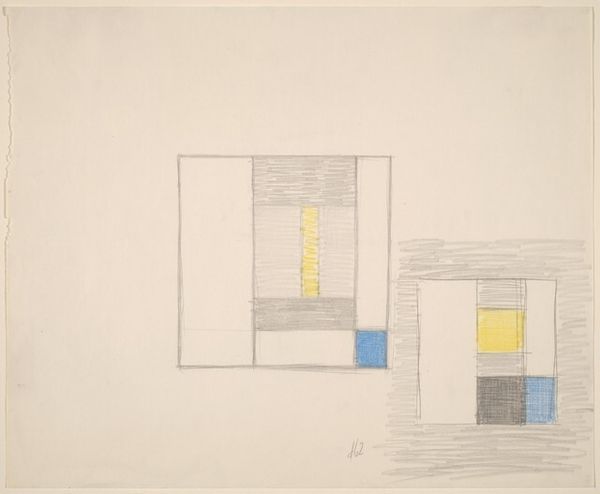
drawing, paper, pencil, graphite
#
drawing
#
neo-plasticism
#
conceptual-art
#
ink paper printed
#
minimalism
#
paper
#
geometric
#
pencil
#
abstraction
#
line
#
graphite
Dimensions: overall: 12.7 x 18.1 cm (5 x 7 1/8 in.)
Copyright: National Gallery of Art: CC0 1.0
Curator: So, this is Peter Halley's "Cell 13," created in 1995 using graphite, pencil, ink, and printing on paper. Editor: Right. I’m struck by how...cold it feels? The rigid geometry, the gray tones...it reminds me of prison architecture or circuit boards. What do you see in this piece? Curator: I see a powerful commentary on the increasing regimentation of contemporary life. Halley, influenced by thinkers like Foucault, presents these geometric forms not just as abstract shapes, but as representations of social spaces – prisons, schools, offices – that constrain and define individual agency. Think about how the "cell" is visually linked to the "conduit" - that connecting bar. Does that suggest connection or constraint to you? Editor: I guess both? The cell suggests isolation, but the conduit implies some sort of interaction. Is Halley suggesting that even in our supposedly hyper-connected world, we’re still fundamentally isolated within these imposed structures? Curator: Precisely. And consider the historical context of Neo-Plasticism and Minimalism that inform this piece. While those movements aimed for utopian abstraction, Halley uses similar visual language to critique power dynamics and social control. He flips the script, suggesting that geometry itself can be a tool of oppression. Does the simplicity itself underscore that these concepts, although simplified on paper, extend into complex real-world manifestations? Editor: It's unsettling how such a simple drawing can be so loaded with meaning. It makes me reconsider how I interact with built spaces every day. Curator: And that's the power of Halley’s work! He prompts us to question the structures, both physical and social, that shape our lives and identities. It also allows us to rethink previous artistic movements. Editor: Absolutely, and it's challenged me to examine the role of geometric abstraction beyond purely formal concerns.
Comments
No comments
Be the first to comment and join the conversation on the ultimate creative platform.
